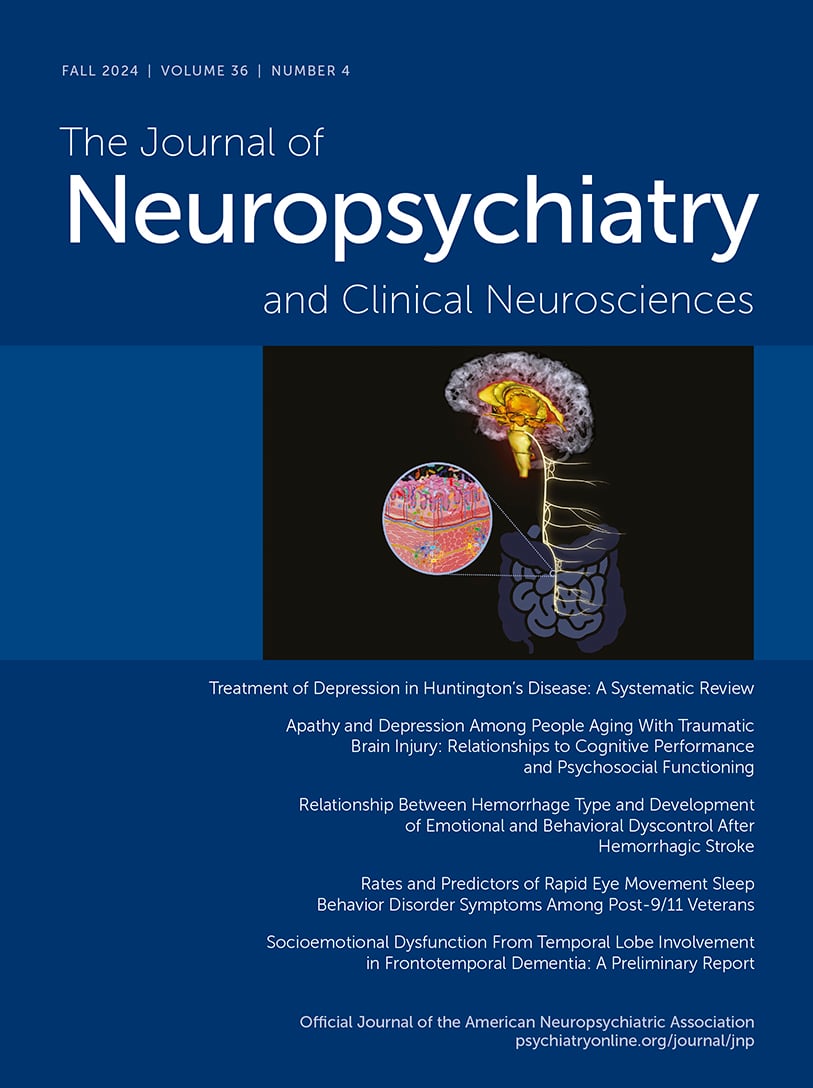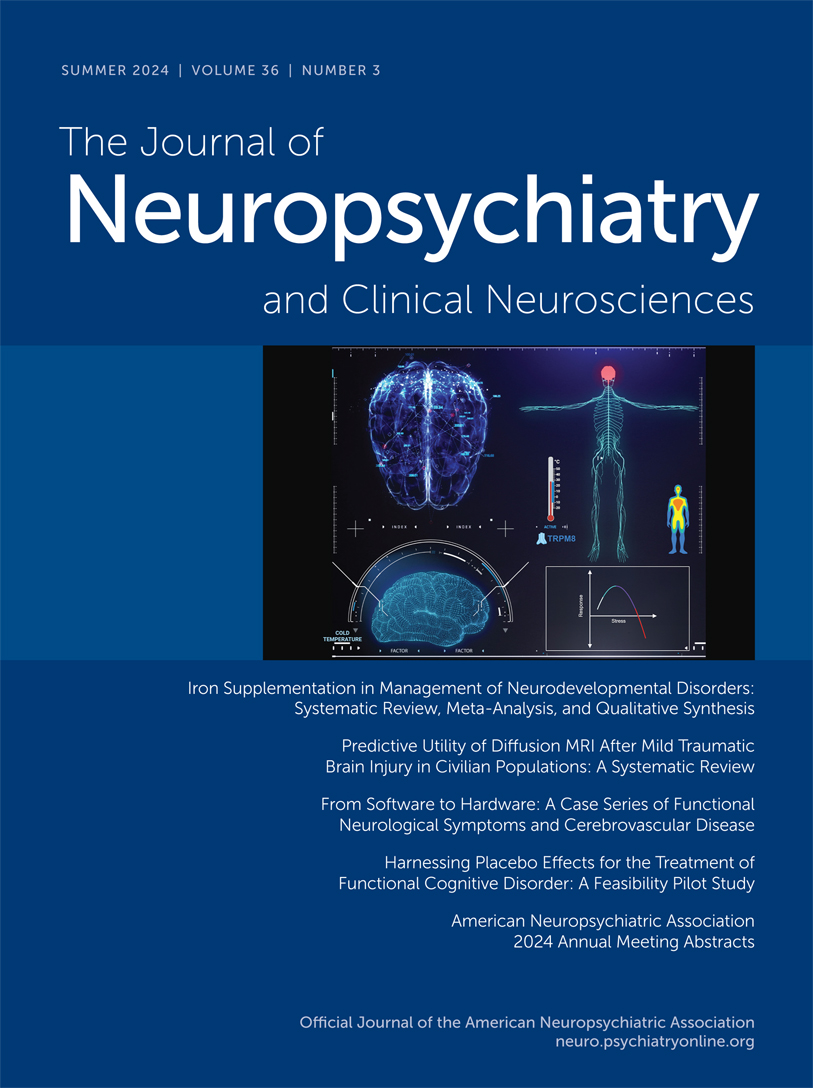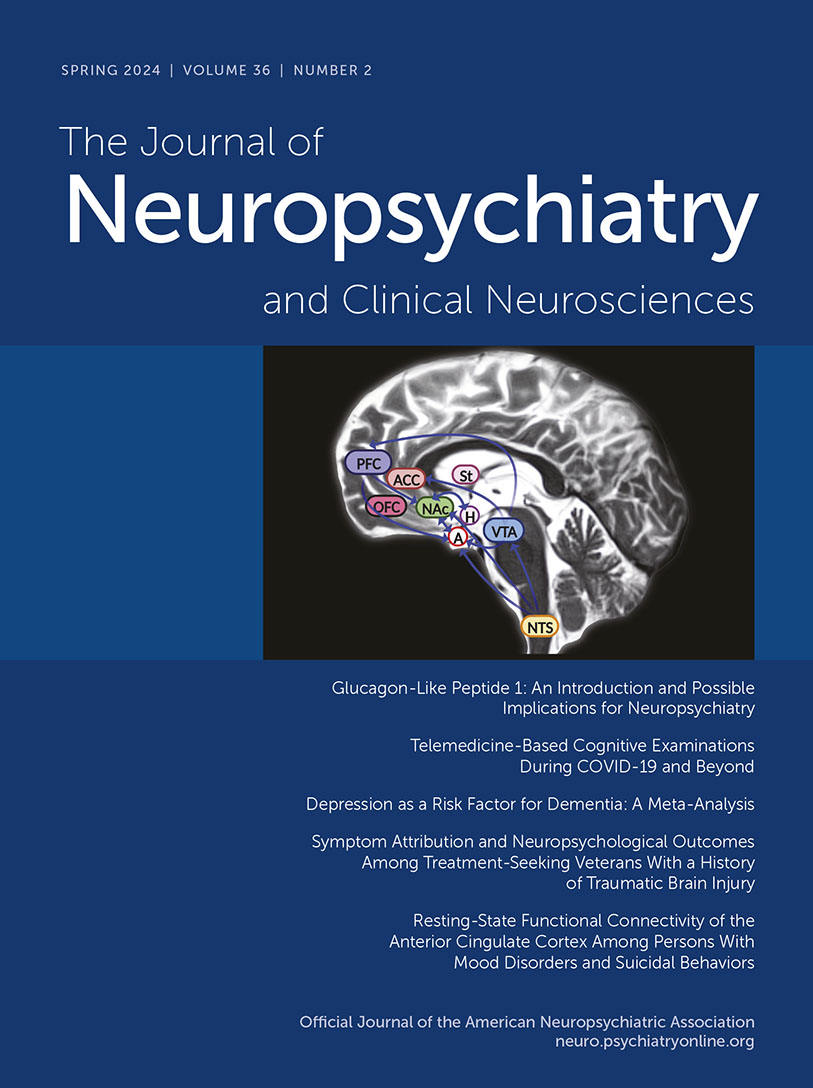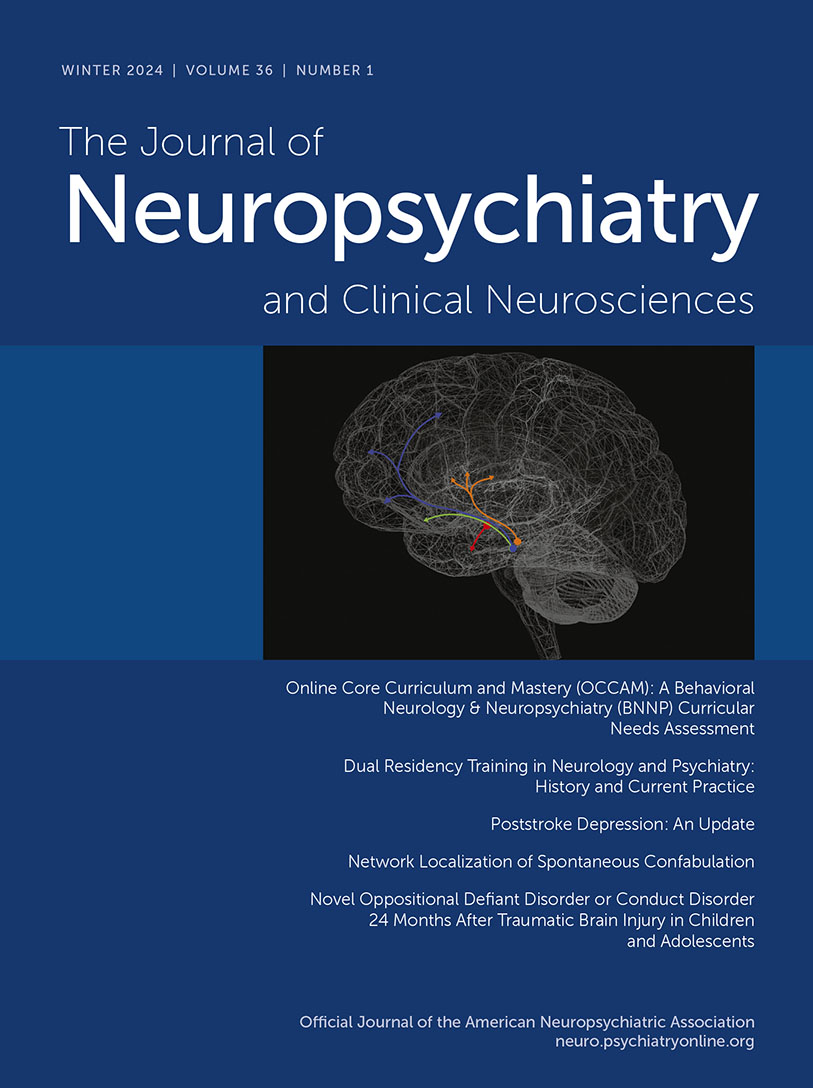The Journal of Neuropsychiatry and Clinical Neurosciences
- Volume 28
- Number 4
- October 2016
Windows to the Brain
Special Articles
Publication date: 03 June 2016
Pages262–272The term white matter dementia (WMD) was introduced in 1988 to highlight the role of white matter in the development of dementia. As the concept has been refined with new insights into the structure and function of normal and abnormal white matter, ...
https://doi.org/10.1176/appi.neuropsych.16010003Publication date: 22 February 2016
Pages273–285The authors provide a comprehensive review of the neurobiology of empathy and compare this with the neurobiology of psychopathic predatory violence—the most extreme deficit of empathy. This suggests that the specific areas of the prefrontal cortex and ...
https://doi.org/10.1176/appi.neuropsych.15080207Regular Articles
Publication date: 08 April 2016
Pages286–291To better identify stroke survivors at risk for depression who may benefit from early prevention through targeted strategies in the acute-subacute poststroke period, we examined 118 Framingham Heart Study stroke survivors with longitudinal prestroke ...
https://doi.org/10.1176/appi.neuropsych.15110388Publication date: 03 June 2016
Pages292–298Damage to the brain’s mood regulation systems may contribute to poststroke depression. This study examines relationships between depression symptoms and psychosocial factors and then uses multivariate lesion-symptom mapping to localize depression symptoms ...
https://doi.org/10.1176/appi.neuropsych.16010004Publication date: 08 April 2016
Pages299–305Suicidal ideation and behavior are highly prevalent in psychotic major mood disorders, yet their relationship to brain function remains unclear. Thirty patients with recent-onset of bipolar disorder type I (N=21) or major depressive disorder (N=9) with ...
https://doi.org/10.1176/appi.neuropsych.15120422Publication date: 03 June 2016
Pages306–311Evidence that Tourette’s syndrome (TS) disrupts inhibitory motor control is highly mixed. The authors investigated inhibitory control of manual and vocal actions in young adults with relatively uncomplicated, persistent TS. Both TS and control groups ...
https://doi.org/10.1176/appi.neuropsych.15110387Publication date: 03 June 2016
Pages312–318The authors investigated the impact of eye movement desensitization and reprocessing (EMDR) and prolonged exposure (PE) on the volumes of the amygdala and hippocampus, structures known to be important in fear conditioning, in 20 patients with ...
https://doi.org/10.1176/appi.neuropsych.16010006Publication date: 08 April 2016
Pages319–324The authors studied cerebral hemodynamics in alcohol dependence and evaluated their changes with application of high-frequency rTMS. A prospective, single-blind, randomized, parallel-group, sham-controlled clinical study was conducted with patients with ...
https://doi.org/10.1176/appi.neuropsych.15110381Clinical and Research Reports
Publication date: 21 January 2016
Pages325–327This study examined default mode network connectivity within the first 30 days of abstinence in emerging adults entering treatment for opioid dependence. There were significant associations between abstinence duration and coupling strength with brain ...
https://doi.org/10.1176/appi.neuropsych.15090240Publication date: 03 June 2016
Pages328–331Detecting cognitive dysfunction in a busy traumatic brain injury (TBI) clinic is challenging given the length of conventional assessments and the need for psychometric expertise. The authors report the utility of a 10-minute, easily administered ...
https://doi.org/10.1176/appi.neuropsych.16010005Publication date: 21 January 2016
Pages332–334This study examined the presence of neurological soft signs, an accessible diagnostic instrument, in patients with anxiety. Individuals with anxiety were more likely to manifest hypoesthesia than healthy controls, and patients who showed hypoesthesia ...
https://doi.org/10.1176/appi.neuropsych.15080202Case Reports
Departments
Past Issues
View Issues Archive
Vol. 36 | No. 4

Vol. 36 | No. 3

Vol. 36 | No. 2
